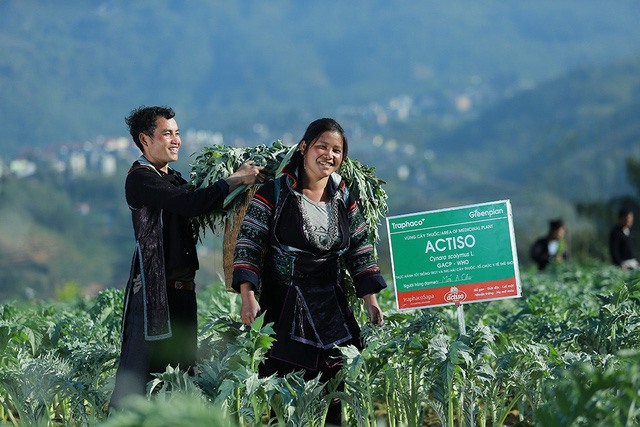 Economy
Economy

Experts and scientists discussed ways to promote the herbal medicine industry in Việt Nam at a workshop on March 28 in Hà Nội.
 |
| Farmers harvest Actichoke flowers at a farm of Traphaco JSC in Sa Pa district, Lào Cai Province. — Photo Courtesy of Traphaco Company |
HÀ NỘI — Experts and scientists discussed ways to promote the herbal medicine industry in Việt Nam as at a workshop on March 28 in Hà Nội.
Prof. Trần Văn Ơn, head of the phytological speciality of the Hà Nội University of Pharmacy, said that local herbal materials haven’t met the expected potential; it could not even compete with imported materials and products right in the market of Việt Nam.
“We now see the source of herbal material as a mine and we will continue digging until it is exhausted. That is the current situation of the pharmaceutical material industry in Việt Nam,” Prof. Ơn said.
He added that the pharmaceutical material source has been exploited rampantly for export in many provinces and regions. This situation will lead to the exhaustion of natural sources in Việt Nam.
“We have only seen herbal plants as drug materials. It means that we have already missed a lot of chances to diversify many products that can be developed from our herbal plants, especially a chance to connect the development of herbal materials with tourism. From that we could participate in a huge market of no-smoke industry worth billions of US dollars,” Ơn said.
“It’s time to revise the way we see the local pharmaceutical materials,” Ơn stressed.
The director of the Quảng Ninh Health Department, Vũ Tuấn Cường, said that herbal medicines and health care products manufactured from herbs have gained a lot of competitive advantages in the current context of globalisation, global integration and severe competition due to Việt Nam’s favourable natural conditions and biodiversity.
“The herbal medicine sector should choose three to five local herbal plants as key products in order to promote the development of medicine and international integration. South Korea, for example, has focused on two plants, Ginseng and Lingzhi, which can bring billions of dollars in export yearly,” Cường said.
Therefore, we need to promote the value of good plants such as Ngọc Linh ginseng, Ba Kích (Morinda officinalis How) and apply advanced technologies for the development of herbal medicines from the selection of seedling to product underwriting and distribution following value chain.
Nguyễn Huy Văn, deputy general director of Traphaco JSC, said that Việt Nam has around 4,000 herbal remedies, so it is necessary to focus on exploiting those sources of knowledge.
In the current trend, traditional medicine is not only limited to traditional methods of herbal medicine production but also the application of advanced science and technology from product development and plant care to harvest, processing and packaging, according to Văn.
Prof. Ơn said that a herb development system in the community of the university’s Department of Plant, in collaboration with the DK Pharma JSC, has formed a good business model and efficient value chain over the past 15 years.
That is a model of medicinal garden combined with tourism development. Two medicinal gardens were established in Yên Tử (Quảng Ninh Province) and Bái Đính (Ninh Binh Province). A medicinal garden was proposed to be built in Quản Bạ District, Hà Giang Province. — VNS




